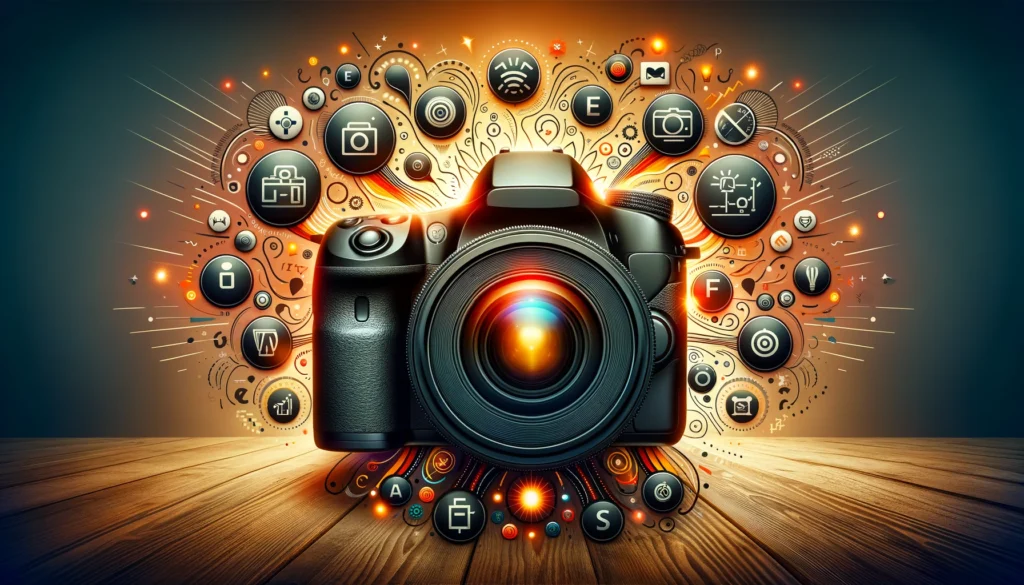Table of Contents
Welcome to the fascinating world of DSLR photography! Whether you’re a beginner picking up a camera for the first time or a seasoned photographer brushing up on the basics, understanding the fundamental concepts of DSLR photography is crucial. This comprehensive guide covers essential terms and techniques from A to E, equipping you with the knowledge needed to capture stunning photographs. Let’s dive into the core elements of DSLR photography that every photographer should know.
Understanding DSLR Photography
Lighting and Exposure In DSLR Photography
- Backlight – When the main light source is behind the subject, backlighting can create a glow or silhouette effect. Proper exposure settings are key to managing backlight situations.
- Bounce Flash – Soften the harshness of a flash by pointing it towards a reflective surface like a ceiling or wall. This technique is excellent for achieving more natural-looking light in your photos.
- Bulb Mode – Use this mode for long exposures, keeping the shutter open for as long as the shutter button is pressed. It’s perfect for night photography and capturing light trails.
Focus and Image Quality
- Blur Image – A common issue where the subject or entire image appears out of focus, often resulting from incorrect focus settings or camera movement. Learning to control depth of field can help manage intentional and unintentional blur.
- Camera Shake – Blurry images caused by camera movement during exposure. Use a tripod or stabilize your camera to prevent shake, especially in low light conditions or when using slow shutter speeds.
Metering and Color
- Center-weighted Light Metering – Prioritizes exposure metering toward the center of the frame, useful for subjects that are centrally located.
- Color Saturation – Refers to the intensity of colors in an image. High saturation means vivid colors, while low saturation results in muted tones.
- Color Temperature – Measures the hue of the light source, affecting the mood of your photo. Higher temperatures produce cooler (blue) tones, while lower temperatures yield warmer (red) tones.
- Color Tone – The overall hue of an image, which can be adjusted to make photos warmer or cooler according to your vision.
Advanced Techniques and Settings
- Contrast – The difference between the darkest and lightest parts of an image. Adjusting contrast can help make your images pop.
- Creative Auto Mode (CA) – Offers more control than auto mode, allowing adjustments to settings like brightness, depth of field, and color tone while still providing guidance.
Depth of Field And Metering
- Depth Of Field (DoF) – Determines the range of distance within a photo that appears acceptably sharp. A shallow DoF blurs the background, focusing attention on the subject.
- Depth Of Field Preview – A feature that allows you to view the actual depth of field through the viewfinder before taking the shot.
- Developing a Picture – The process of converting a RAW file into a final image, whether in-camera or through post-processing on a computer.
- DPI (Dots Per Inch) – Indicates the resolution of an image, with higher DPI values offering greater detail, especially important for printing.
Exposure and Light Metering
- Evaluative Light Metering – An all-purpose metering mode that assesses the entire scene to set the exposure, recommended for general use.
- Exposure – The amount of light allowed to reach the camera sensor, crucial for achieving the desired brightness in your photos.
- Exposure Compensation – Adjusts the camera’s automatic exposure settings to correct for scenes that might otherwise appear too bright or too dark.
- Eyepiece – The part of the camera you look through to compose your shot. Adjustable diopters accommodate different eyesight conditions.
How do I manage backlight in my photos?
Use exposure compensation or position your subject to minimize the backlight effect. A fill flash can also help illuminate the subject against a bright background.
What is the best way to avoid camera shake?
Use a tripod or increase your shutter speed. Image stabilization lenses or in-camera stabilization can also help.
How can I adjust the color temperature in my photos?
Most DSLRs offer white balance settings that let you adjust for different lighting conditions, or you can modify color temperature in post-processing.
When should I use bounce flash?
Use bounce flash in indoor settings where direct flash might be too harsh. It’s perfect for portraits and group photos.
Conclusion
Mastering the B to E of DSLR photography sets a solid foundation for both new and experienced photographers. From managing backlight and understanding bounce flash to mastering depth of field and color temperature, these concepts are the building blocks of great photography. Remember, the key to success in photography lies in practice and experimentation. Use this guide as a starting point to explore the vast possibilities your DSLR camera offers, and don’t hesitate to push the boundaries of your creativity. Happy shooting!
To Read the Article “DSLR Photography – A Beginner’s Guide to ‘A’ Settings” Click Here
